Chapter 3
Partners on Partnering
Ask any graphic designer and he or she will sing the praises of collaboration. In an interconnected, cross- platform creative profession, it is impossible to be a lone genius anymore. Granted, the genius will lead and others will follow, but working and playing well with others is more essential because the vast number of platforms and outlets require multiple expertises—more than one person can embody at the highest level. This may account for the growth of design studios and firms with two or more partners. It certainly is the reason for single-person studios to bring in a range of people to handle anything from conception to manufacture, from brainstorming to technologizing.
Hjalti Karlsson and Jan Wilker
Not a Lot of Verbalizing
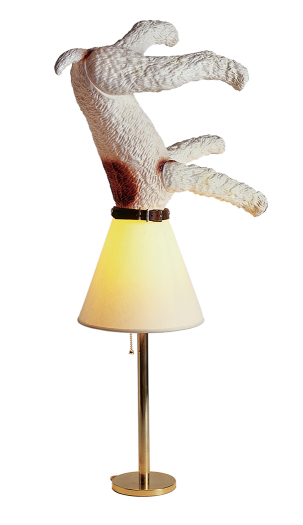
Dog Lamp
Client: In-House
2001–2011
How do you practice design as a partnership? Do you collaborate or work individually?
The way we work seems to be a loose system of checks and balances—nothing is mandatory or standardized, but [is] based on trust and respect of the other's opinion and point of view. It seems like an unquantifiable mix of solo and joint thinking, where we both work individually and ask for feedback when tweaking something. We sit together, discuss together, and think together. We're always direct and frank with each other. Overall, it helps that egos are very small in our studio.
What are the differences in your method, manner, and aesthetics—if any?
This was observed by Megan Elevado, our director of creative operations: “When Hjalti is working, he seems to be in an invisible cocoon and shut off from everyone, while Jan is focused on work, but not completely zoned out to everything else. Both are pretty quiet and not effusive when speaking about their own work. There is a lot of quiet thinking—sometimes this thinking even reads (in terms of body language) as computing. There's not a lot of verbalizing.”
Karlssonwilker has an overall attitude, if not a style, full of wit and irony (like your Doglamp). How would you define your approach?
We just recently banished irony from our work here in the studio. So far it's working fine. It's difficult to write about it, so it would be best to look at our work and see for yourself.
Your work is highly conceptual; when you hire designers, is it for their typography or their conceptual acuity?
Solid typography and overall craft is a basic prerequisite. The same goes for flexibility in thinking. What we look for in designers (and that very rarely happens, since we're a very small studio and people tend to stay with us for quite some time) is personality and character—if we can see ourselves spending most of our waking hours in the same room with them.
How has your practice and graphic design changed since you began the business?
We still are in the same space we started 13 years ago, on 6th avenue and 14th street. The layout in the studio hasn't changed. Some furniture was replaced; the computers as well. The big changes happened and happen all inside. From a two-person operation with naive spirits and lots of energy, we became by way of lots of self-induced stress, mistakes, and sleepless nights [what] we are right now: a small studio of six people who try to enjoy every single day. And we stopped working on weekends. The design changed in a way that we don't see the client as an enemy, but as an important ally and collaborator throughout the whole process. We fight less with the clients.
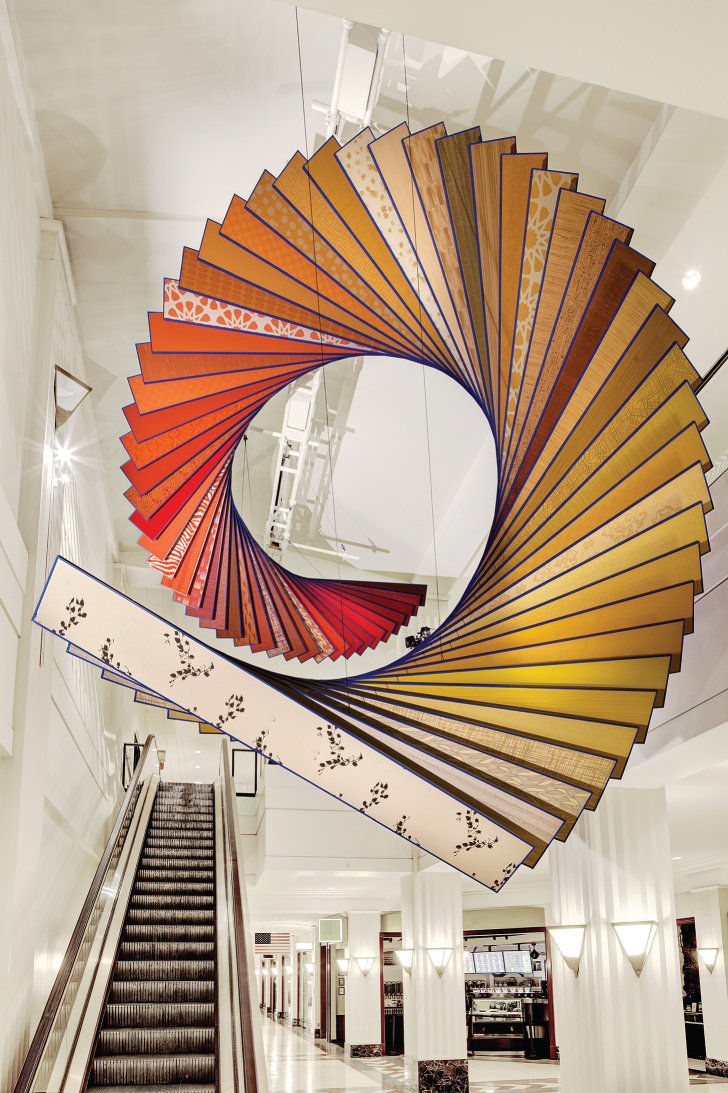
Sculpture 3
Client: Wolf-Gordon
2013
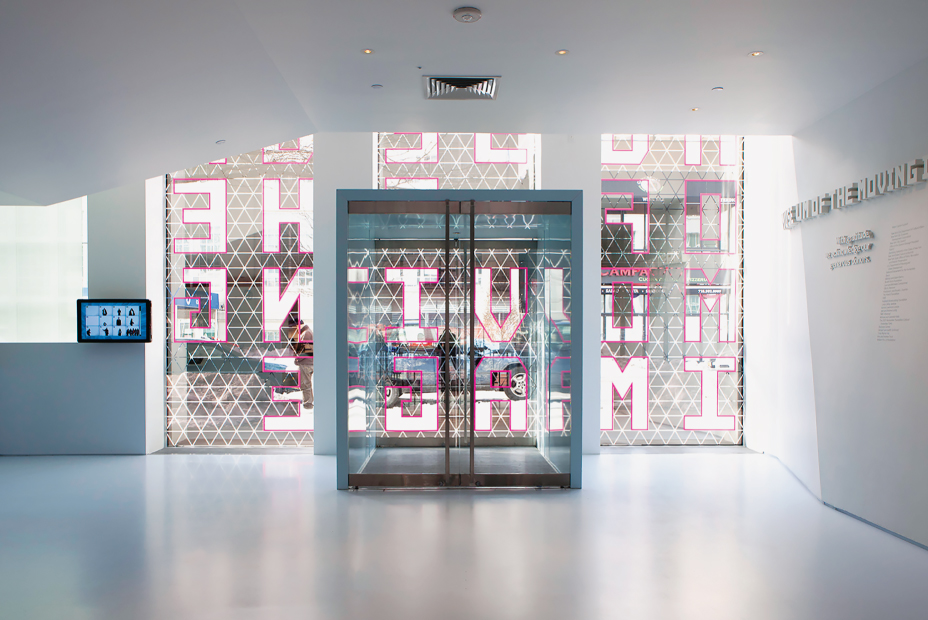
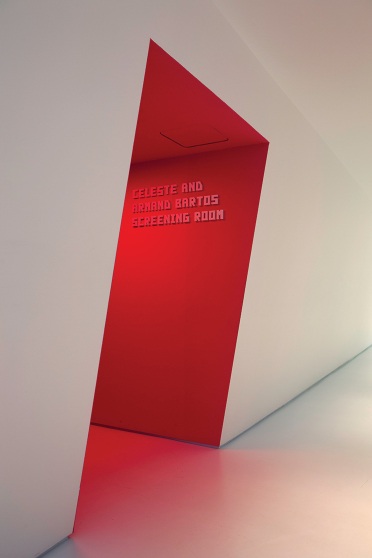
Signage, Wayfinding, and Identity for MoMI, Museum of the Moving Image, Queens, New York
Client: Museum of the Moving Image
2011
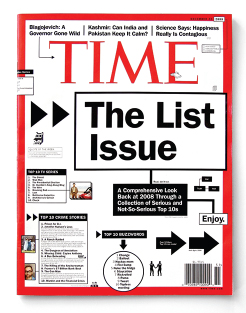
Time Magazine 12-Page Feature 2008
Stuart Rogers and Sam Eckersley
Sharing Responsibilities
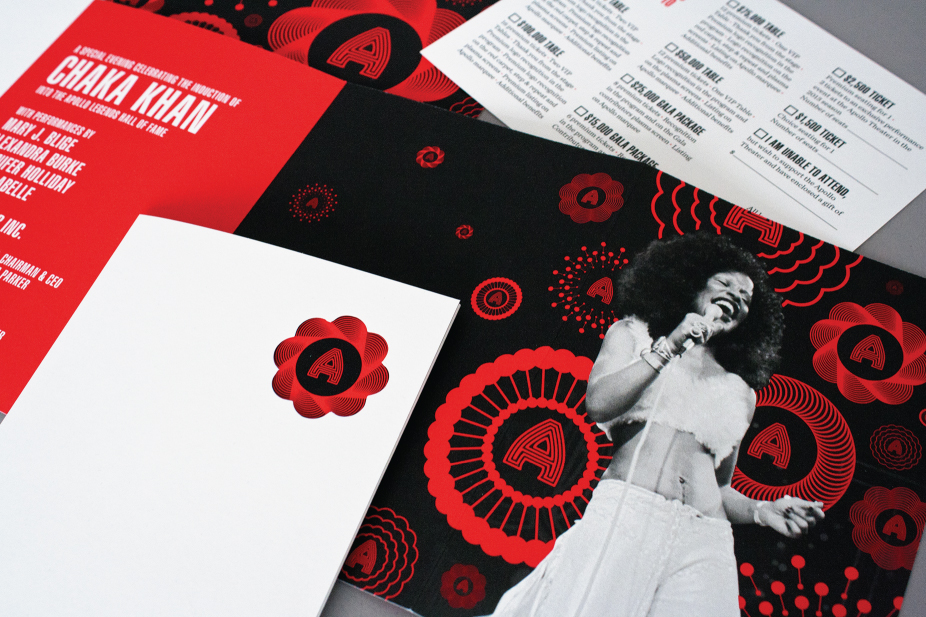
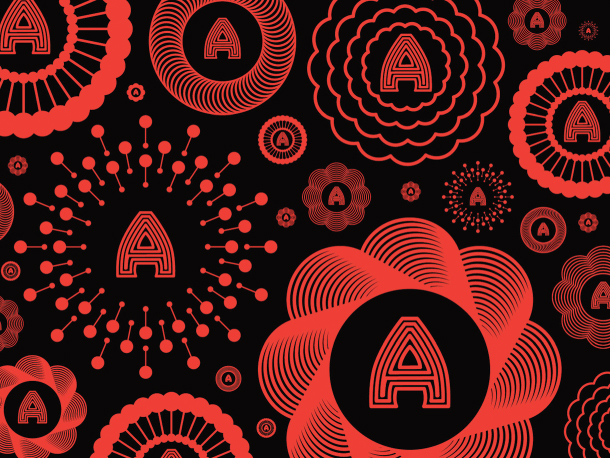
Apollo Spring Benefit
Client: Apollo Theater
Creative Direction: Stuart Rogers and Sam Eckersley
Design: Jane Huschka and Joe Brown
What is the best thing about having a design partnership?
The best thing about it is that you have someone you trust to consult with about every aspect of the business. It gives you confidence. It doesn't hurt that you can divide up the responsibilities of running the company or that you can go on vacation assured that business will run smoothly. It also means twice the business development since we are both out there connecting with people.
What is the not-so-good-thing about having a design partnership?
We're pretty similar! Our names start with S, we have the same design approach, the same aesthetic. Occasionally, we show up at the office in the same shirt. Clients like that when they hire us, they're getting two for the price of one, but from a business perspective, we can end up with too much overlap sometimes. It can get muddled. A more efficient partnership might include someone with business training, or at least someone who had strong interest in taking on the business-side responsibilities.
How do you split up the business responsibilities and the creative perks?
We have help with bookkeeping and accounting, but we divvy the other administrative roles pretty evenly. This happened organically over time, and these tasks have pretty much stuck. On the creative side, we have different interests. Sam leads the art direction of the staff. Stuart is less involved there but occasionally feels the need to get into the trenches and make something. We create opportunities for each other to do the work we like.
What percentage of the jobs you take on are accepted to keep the studio running?
50 percent.
Who are the clients that provide you with satisfaction but also challenges and why?
The dream clients are the ones who offer three things: creative promise, an adequate budget, and expertise in working with designers. We probably won't work with anyone who offers just one of these things, but many of our clients offer two. For instance, we have a wonderfully experienced client with money to spend, but the work is not superchallenging. We also have a client that is great to work with and offers the potential for projects we can shout about, but the client has tiny budgets. These are the challenges.
Are you equally busy with print and digital?
We're focused primarily on creating brand identities for events. When we're involved with the execution, there is a wide range of forms it could take—printed collateral, digital executions, signage, merchandise, stage backdrops, beer taps (yes). Most of what we make lives in analog form, but we are increasingly looking for opportunities to use video and other digital executions to make richer experiences.
When you hire designers, what do you look for?
We look for talent, hunger, confidence, consistent optimism, and attention to detail. A sense of humor is nice. Lots of new music is also a definite bonus.
How does an employee grow within your framework?
We expect our designers to juggle project management, production, and design. Our designers learn about how to schedule a project, how to keep things on track, how to communicate with clients and printers, how to set up files, and, of course, their design abilities grow since they work with us directly.
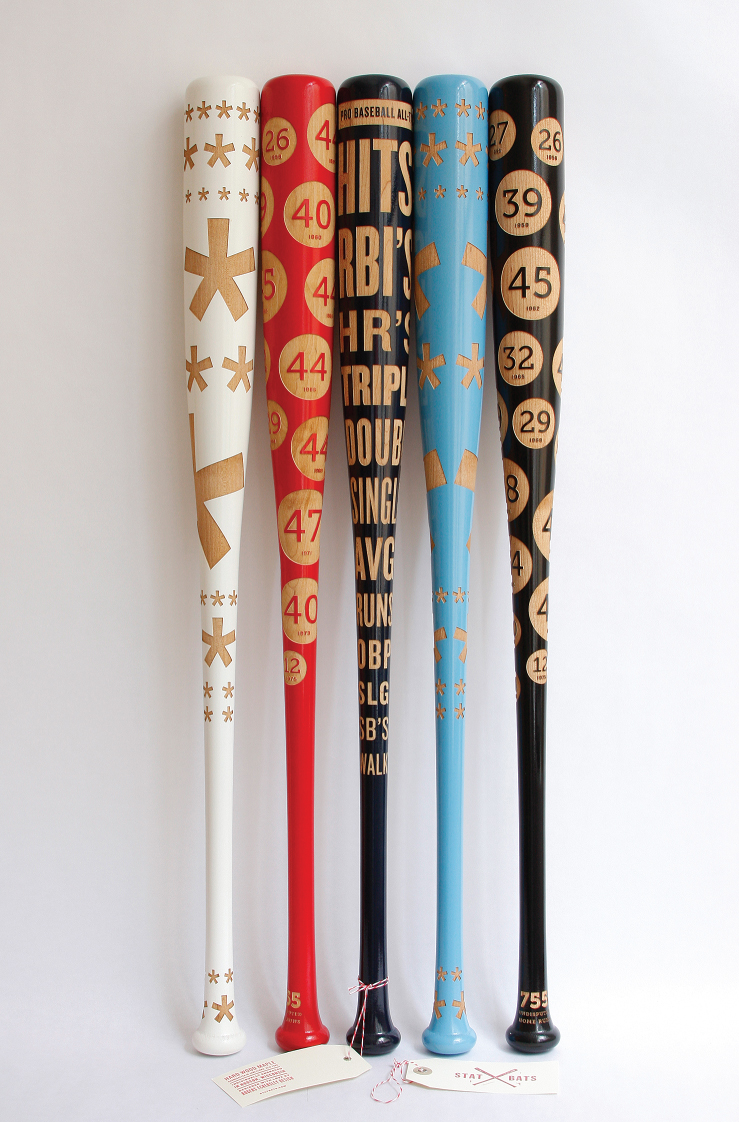
Stat Bats
Design: Stuart Rogers and Sam Eckersley
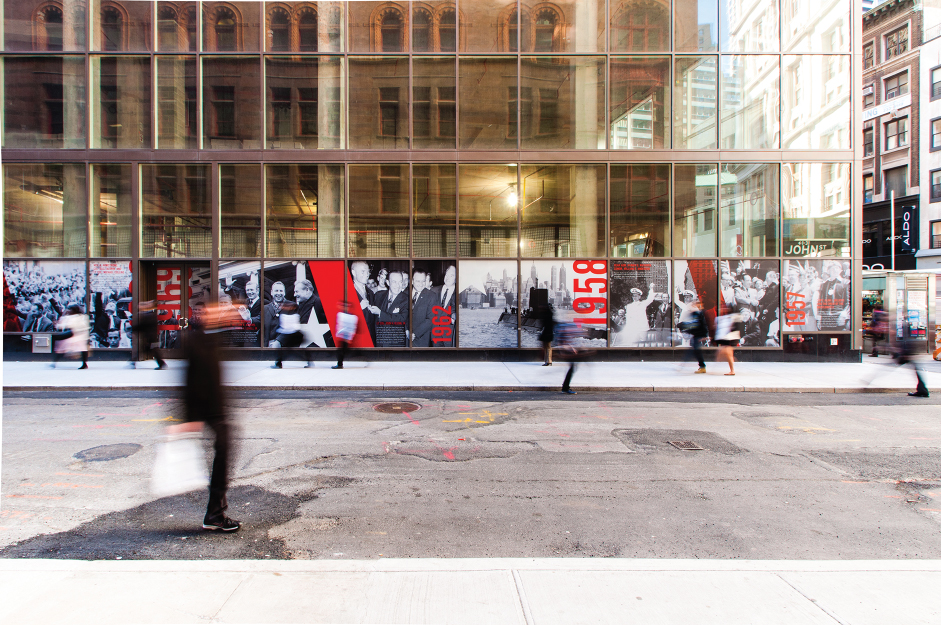
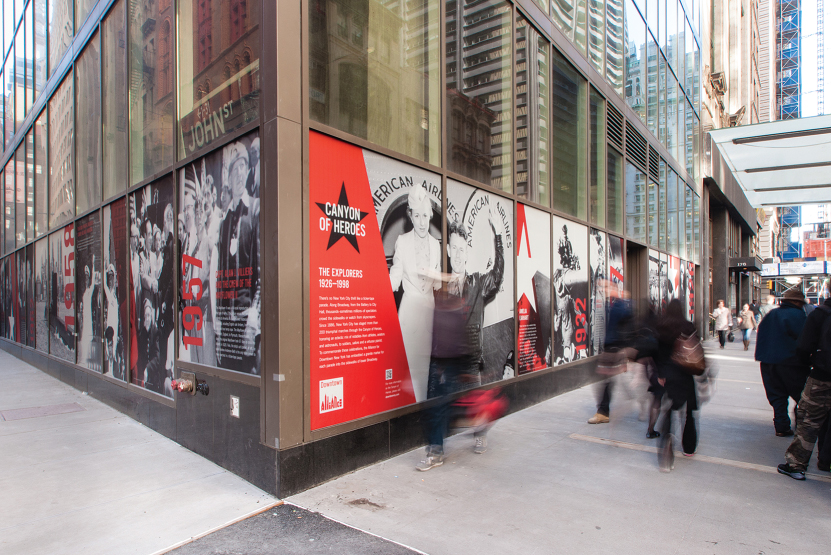
Canyon of Heroes, Street-level Exhibit
Client: Alliance for Downtown New York
Creative Direction: Stuart Rogers and Sam Eckersley
Design: Chris Ritchie
Justin Colt and Jose Fresneda
How Partners Become Partners
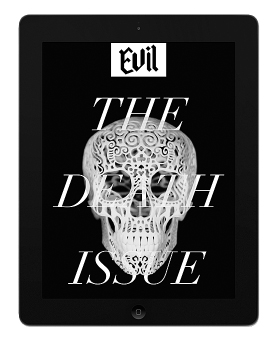
SteEvil Magazine— Digital Publication!
Design: The Collected Works
Photo Courtesy: Joshua Harker
What caused the two of you to form your partnership?
Jose: We have very similar interests and we always understood how to push each other's individual work to new places. That and the fact that we are probably the only people who get each other's sense of humor.
Justin: In grad school, Jose and I would frequently take on and moonlight freelance projects that came our way. While independently working for clients, we would often share what we were designing with each other for input. The benefits of having someone removed from the project provide fresh feedback were extremely helpful–yielding much better work from both of us. After helping each other on a few projects, we started taking on work as a partnership from the onset. It was also beneficial to tell clients we had another team member that would be on board for the projects. Instead of being an independent freelancer, we were a team—and that gave clients an assurance that we were capable of handling what they were entrusting us with.
What did you discuss regarding how the business would be set up?
Justin: Before officially forming the studio, we had a long chat about the management and legal aspects of the business. While we had the same mind-set for the studio goals and general ethos, we hadn't really discussed some issues that might come up down the road. Must all studio decisions be unanimous? Does whoever finds the client get more money? What happens to the studio if one of us decides to leave, or who gets the mutual studio assets if it's dissolved? How much are we going to pay ourselves? Talking very openly about all of these business aspects, finances, and any future problems is an approach we now bring to all our client work as well. It's easy, but naive, to assume that everyone is on the same page for the scope of a project—especially when things need to change or go wrong later.
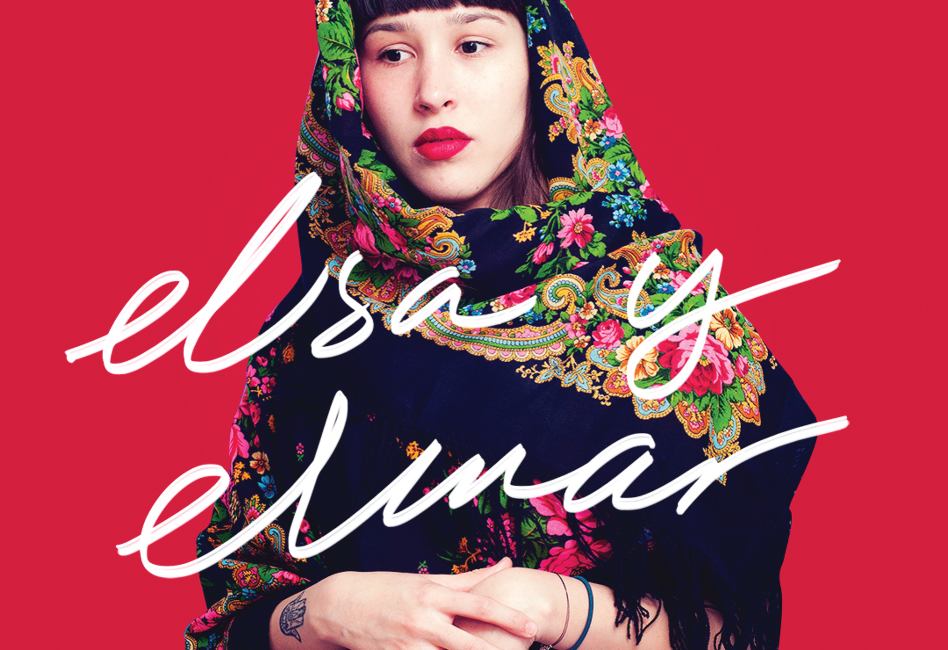
Elsa y Elmar— Album Packaging
Design and Photography: The Collected Works Model: Elsa Carvajal
Who does what in the partnership?
Jose: We both do a bit of everything. It's more a case of figuring out who is cooking dinner and who's in charge of cleaning up the dishes.
Justin: Most jobs are split up pretty naturally when they come in. We have the same vision for where a project should go but often have different approaches, which leads us both to develop different directions to present to the client. It's not competitive, as we're very much helping each other along the way, and often a preferred direction emerges as we work. Having different angles on a problem is what we knew to be so helpful by getting feedback from each other in the beginning. It's more challenging but makes the work stronger, and [it] is almost always appreciated by the client to have a few options.
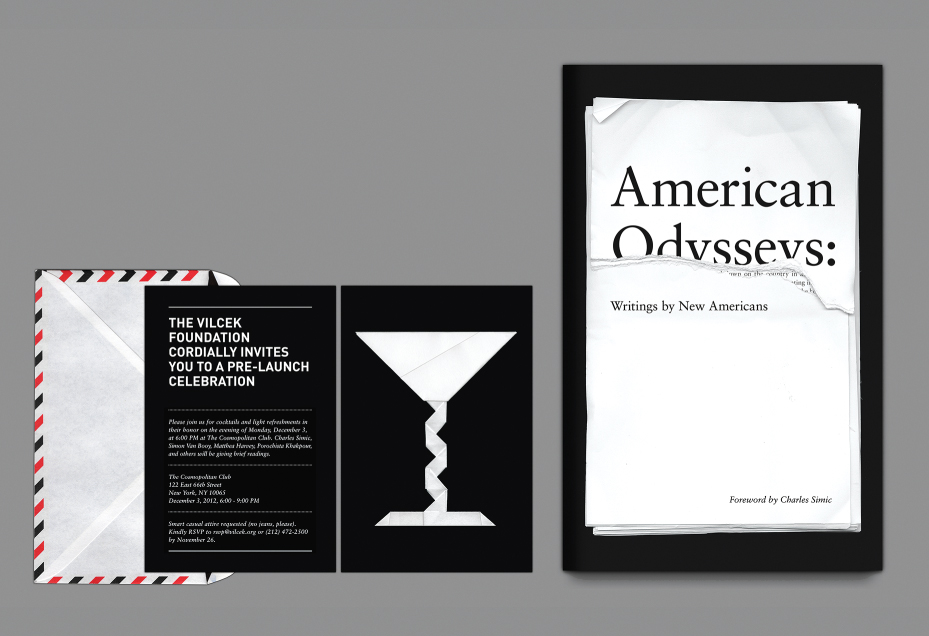
American Odysseys— Book Cover and Collateral
Design: The Collected Works
Client: The Vilcek Foundation
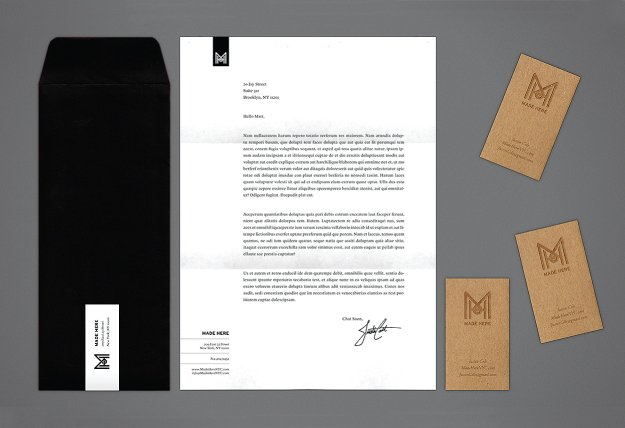
Made Here— Start-up Web Platform/Branding
Design: The Collected Works
You both met in graduate school. Describe “partnership” at first sight?
Jose: I remember as soon as I got the e-mail saying that I got into grad school I started looking at my classmates' portfolios. Justin's was one of those that just made me nervous because of how good it was. After the initial shock, and realizing that we had many interests in common, it wasn't hard to start thinking of developing projects together.
What have been some of the bumps in your professional road?
Justin: It's really difficult to start a business. It's even more difficult when you have very little funds to get started. Before leaving our full-time design jobs and completely committing to The Collected Works, we had to pool our money from our client work for about a year. Funds were tight, and we had to be as resourceful as possible. We worked out an agreement to rent a couple of desks part-time in a studio, in exchange for doing design work for the owner. After this, we worked from various coffee shops, libraries, and public locations around the city. It's hard to work like this, though; working from just a laptop with choppy Internet isn't sustainable or very efficient.
We were hungry for paying work but didn't want to amass clients and projects that we didn't believe in or wanted to work with. After all, the studio was our opportunity to work with people we respected and be a part of the projects we wanted to work on. Our clients are a representation of us and would lead to the clients we will have in the future. We had to build a solid foundation of good work for smart clients—which is the work everyone hopes for—but that often means those projects don't pay too well.
At this stage, are each of you doing other work, freelance or part-time?
Jose: I just finished a six-month apprenticeship period with a small studio in Brooklyn called Dark Igloo. They have been very supportive of what Justin and I have been doing, considering that they started at about the same age. It's been an amazing learning experience in terms of seeing how they manage their business, how they treat the people who work with them, and how to keep the overhead low.
Justin: Nope, all of our time and energy is dedicated to the studio. Before, when we had part-time design jobs with other studios, any freelance work that came to either one of us was shared through the studio. If we were in it, we were in it together—we weren't going to pick and choose which work we handled independently and which work would be shared. All funds are consolidated into the studio account, from which we pay ourselves, [pay] our overhead, and save for the future.
What is the work you are most pleased with now?
Jose: I really like a recent project that we completed for a musician friend in Boston. It was a great opportunity to do not only the design but also art direction and photography for the piece. I enjoyed being part of the process since the beginning, and even if we had to get crafty to overcome a tiny budget, it pushed the final result beyond the client's or even our own expectations.
Justin: It's hard to pick a favorite, but there are definitely some top projects. Working with the School of Visual Arts is always good work. In addition to us having such an appreciation for the school, without fail everyone we've worked with has been a great client. We've done the collateral and promotion for three of the graduate programs, including Web, branding, print, and poster design. Other notable work has been from larger companies like The New York Times and Converse to smaller start-ups and musicians. One of the biggest advantages of being a small studio is that we don't have to only take on large businesses with massive budgets. We can also help people we believe in, which is what this was all about.
Greg D'Onofrio and Patricia Belen
Two Partners, One Passion
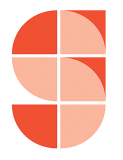
GoodStory Films (logo)
Designers: Kind Company
Do you both have similar or complementary skills and talents, or do you each come with different assets?
Both. However, after 10 years in business, we've learned to collaborate on virtually all aspects of running a design studio and making available a variety of skill sets, opinions, and ideas for each scenario. For us, the best results in design are often found via a collaborative process—this means sharing most tasks, including design, client meetings, business development, writing/researching, answering the phone, making coffee, and so on. There is hardly a task one of us does independently, without the other partner's guidance.
How would you describe your method or style of working?
We don't subscribe to one specific method of working. In general, our approach has always been centered around the belief that successful graphic design should be simple, smart, and usable. For us, that's always been a balance of function and aesthetics—communicating information honestly and effectively to solve our client's business goals. If a project is worth doing, it's worth doing well. Not all projects are glamorous, yet they all deserve the same amount of dedication.
In addition to being a design studio, you also produce websites on design history. How did this come about?
Alongside client work, we engage in self-initiated graphic design history projects. We're self-taught, and, unfortunately, we never had an opportunity to study graphic design history. Developing these “types” of projects as vehicles for modern, mid-twentieth- century graphic design history, pioneers, and artifacts is both educational and inspirational.
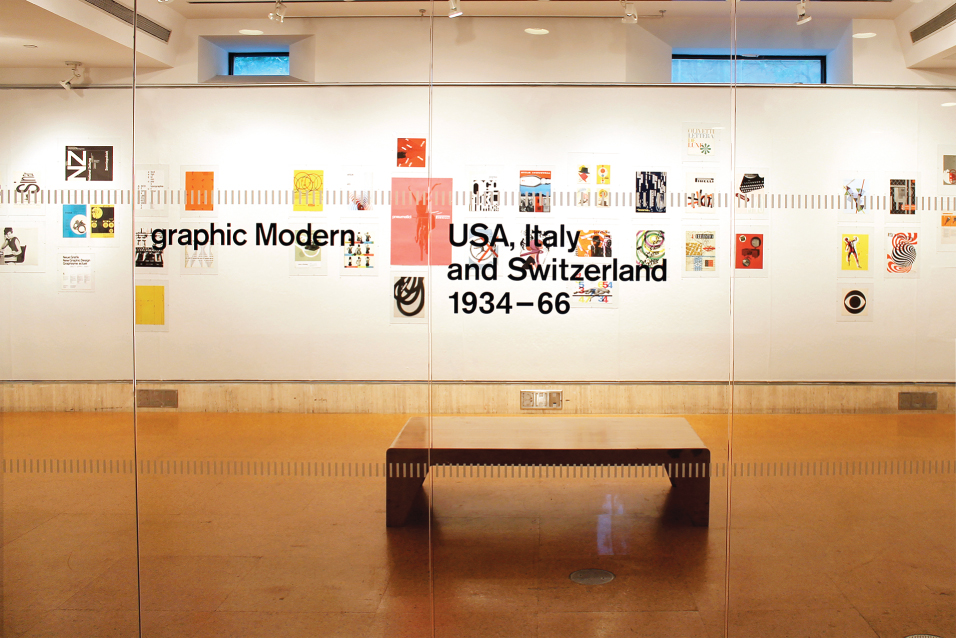
Graphic Modern
USA, Italy, and Switzerland 1934 – 66 (exhibition)
Designers: Kind Company.
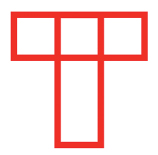
Tetra Images (proposed logo)
Designers: Kind Co.
Is the Alvin Lustig (alvinlustig.org) site, a work of love?
Absolutely. We were never required to do it, and it would not have been possible without published articles and Elaine Lustig Cohen's generous support. When we set out to do the project in 2006, Alvin Lustig was still a little known, yet hugely important design pioneer who needed to be introduced (or reintroduced) to a growing online audience. We've always been fascinated by his work, and we figured the best way to educate ourselves (and others) was to develop a website cataloging his work.
You also have your own digital “bookstore.” What was the moti- vation for this? And what has been the result?
Our noncommercial projects take lots of time and dedication, and we often look for ways to help “fund” the projects. Our Display bookstore (thisisdisplay.org/bookstore) does exactly this, by offering an important selection of original and hard-to-find graphic design books, periodicals, and ephemera for sale. In addition to the graphic design “classics,” it also means the work of lesser-known designers or the lesser-known work of well-known design pioneers. As collectors, we have an affinity for print, and we see books as valuable tools to design practice, education, and research. The bookstore encour- ages this and connects us with others around the world with similar interests and passions.
There is also an exhibition component to what you do? Do you aspire to become curators?
As aspiring curators, we're encouraged to show and tell others a distinct point of view about midcentury graphic design, typography, and beyond—from the rational to the experimental to the playful. One of the primary responsibilities of owning our collection is conducting research about the items we acquire and finding out how they can far exceed their role as inspirational “eye candy.” It's not enough to own the object—it's also about what the object can teach us. Ultimately, we hope to continue this through writing, curating, and perhaps publishing.
Do you feel it necessary to be diversified in today's marketplace?
It depends. For us, diversification is both a blessing and a curse. On the one hand, it offers the possibility of more work and/or clients. Yet, with two people and more work than we can handle, there's little time to specialize. Over the years, we've learned to not spread ourselves too thin and stick to the few things we do best.
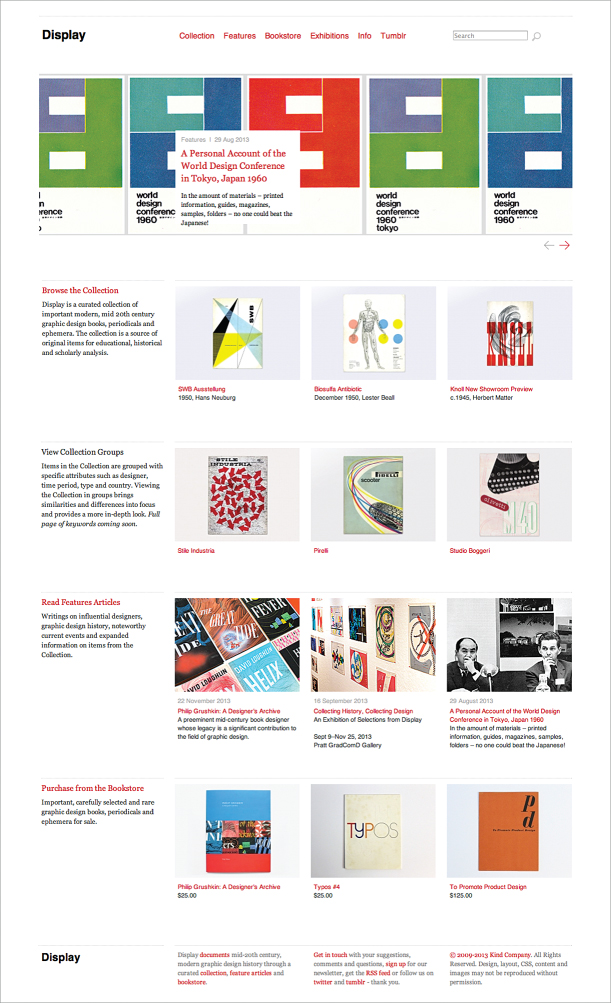
Display, Graphic Design Collection (website, thisisdisplay.org)
Designers: Kind Company.
Scott Buschkuhl
At Present We Are Three
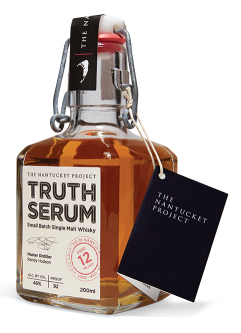
The Nantucket Project
Creative Director: Scott Buschkuhl
Designers: Scott Buschkuhl, Michael Mercer-Brown, Regina Puno
Where did you gather the experience and confidence to start a studio?
The idea of opening a studio came from a mix of ego and naiveté. I felt comfortable with my design skills and handling of client relationships but had no idea what it really meant to run a small business. Through a lot of hard work, some trial and error, and the good fortune of having repeat clients, I find myself here today.
How many are you, and what does each member do?
At present we are three, but we often hire freelancers to adapt to projects of any scale. We build out a team accordingly from a variety of collaborators, including developers, copywriters, photographers, and so on. I am the principal of the studio, and I handle the creative direction and project management, but, honestly, we collaborate on everything as a team. Once we have been retained by a client on a new project, everyone here begins with his or her own research and then design development happens together. No idea is a bad idea.
Do you have a special business model?
We do not have a specific business model per se, but we do prefer to stay small and agile. Our flexible structure provides the opportunity to take on projects of any scope and scale. Being a multidisciplinary office of this size, it is necessary to be flexible in our approach to problem solving and team building. We also work in a very collaborative manner with our clients through every step of the process, making sure that the final result effectively communicates the goals of their organization.
You are multidisciplinary. Is this a necessity for young studios these days?
It isn't necessary to be multidisciplinary these days, as there are many studios that are extremely successful through their specialization, but we really enjoy the idea that on Monday we can be designing an identity, Wednesday an art catalogue, and by the week's end, an illustration.
You work in a range of media and platforms. What do you prefer— print, digital, or textile?
Print is how we got started and a big focus of what we do, but there is no denying that the screen and the physical space are equally important. At the end of the day, our goal is to solve problems and create memorable experiences for the client and the end user.
Do you have a studio style?
Hinterland doesn't have a specific house style. We look for the appropriate response to each and every project, but we naturally bring our own personal experiences along when designing. We are constantly drawing inspiration from film, art, fashion, music, and trends in different cultures and countries that we visit. These experiences continually inform our approach.
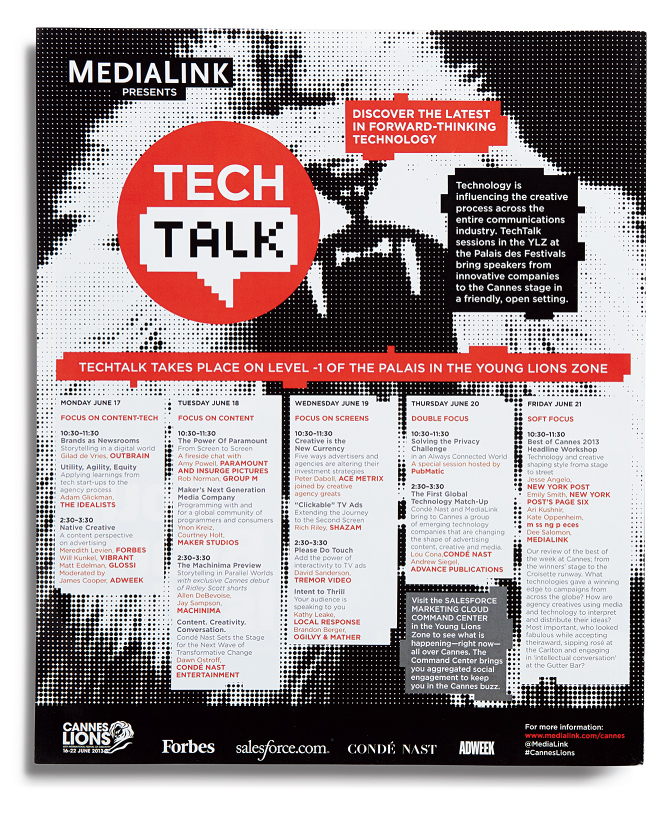
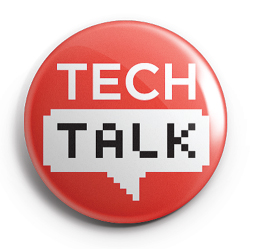
MediaLink
Creative Director: Scott Buschkuhl
Designers: Scott Buschkuhl, Michael Mercer-Brown, Regina Puno
When hiring, what do you look for?
We look for talent first and foremost, but the right candidate must also be enthusiastic, have a different perspective; a love of food, art, and film; a desire to contribute; and a passion to learn; and above all be normal. It's hard to describe being normal, but [it] goes a long way.
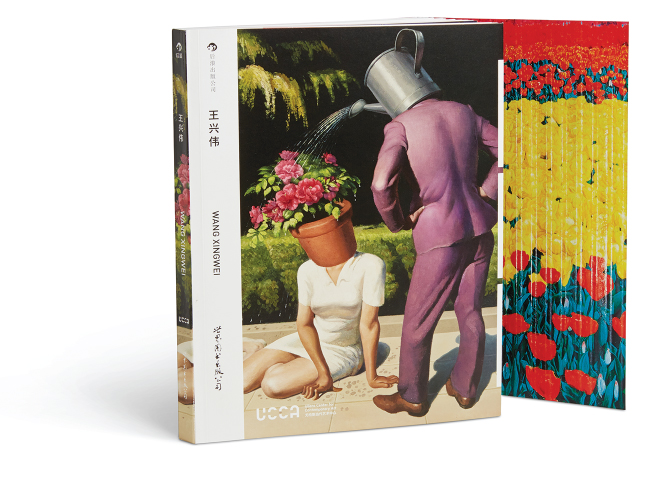
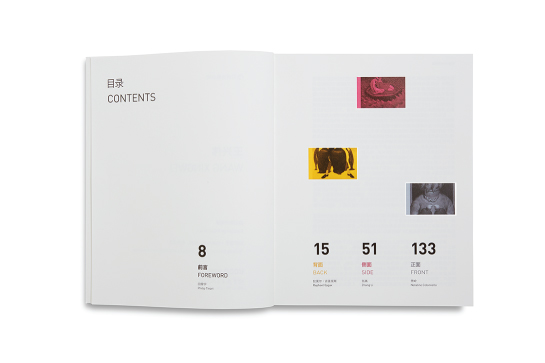
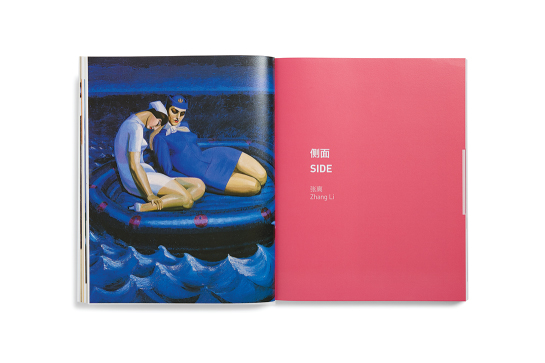
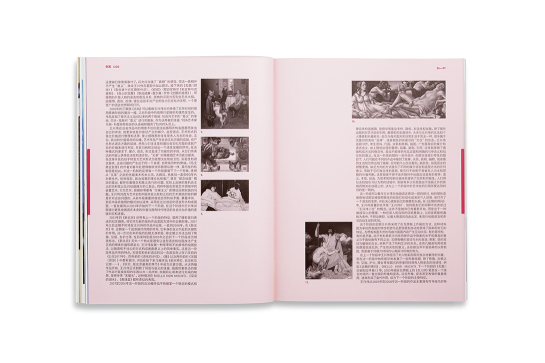
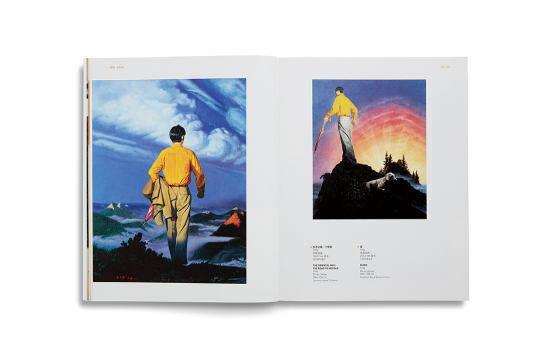
Wang Xingwei
Creative Director: Scott Buschkuhl
Designers: Scott Buschkuhl, Michael Mercer-Brown, Zipeng Zhu